Mystery is a tricky thing. Used correctly, it can give onlookers the impression that wondrous and perhaps valuable things are afoot. However, once the veil of suspension of disbelief is removed in any significant way, that same mystery can quickly turn into not just skepticism, but outright anger at what may have seemed like an attempt to dupe trusting onlookers.
That is, essentially, the story of Magic Leap — at least within the last few months.
And now, with the company's first real contact with the public via the L.E.A.P. conference in Los Angeles behind it, the mystery is gone. And so are a lot of the public's expectations that surrounded the over $2 billion in investment devoted to the unproven startup. That is both a good and bad thing.
The Set Up: The Story Magic Leap Sold
The reception for the Magic Leap One in August was tepid at best, and brutal at worst. The small group of reviewers given pre-release access to the device released their collective pent-up frustration at being promised so much from Magic Leap for years and years, only to be shown what some have argued is just a marginal step up from Microsoft's HoloLens.

Instead of the revolutionary lightfield technology they promised, we got stacked waveguides that Magic Leap insists on calling "photonic lightfield chips." The immersive and long-teased game that was subtlely framed as real gameplay, and then reclassified as concept footage, Dr. Grordbort's Invaders, was absent at launch, with only a colorful logo floating in the system's menu.
Ultimately, the highest profile reactions to all of this stood as a stark divergence from the breathless accounts from famous sports stars and high-level business execs who, while not augmented reality experts, were trusted as barometers of the product's potential impact.
That's why it came as no surprise to me when, as I walked around the company's conference last month and recognized a few familiar tech journalist faces, those faces didn't look very happy to be there. At the time, I shared similar misgivings.
Back in 2015, a Magic Leap exec sat in my New York office and told me how the device would work by beaming signals into your eye (evoking visions of Star Trek's famous yet fictional neurologically addictive AR game), and that the device would perform well in outdoor sunlight (it doesn't).
As we now know, on a practical level, the current Magic Leap One is mostly a better version of something that was already on the market. If Magic Leap's previous framing does exist at the company in some form, perhaps it will emerge in a future product. But for now, the Magic Leap One is what we have, and a majority of the tech analysts have responded with a resounding: So what?
I think the better question is: What now?
I'm not sure how many of my tech media peers actually have a Magic Leap One that they get live with day to day, but after living with mine for a few months, I'm no longer such a skeptic. A lot of the schadenfreude directed at Magic Leap's version of AR (aka spatial computing) reminds me of the knocks against high-end VR in the last couple of years. Most of the people with the strongest opinions haven't actually lived with and used high-end immersive computing gear at home for any significant amount of time.
Think about it a different way: Generally, we don't review smartphones, tablets, or PCs without giving ourselves a chance to "live" with the devices for at least a couple of weeks to suss out all the subtleties and use cases. But for some reason, perhaps because the immersive computing paradigm is so different, many very smart people seem to feel it's ok to briefly sample some of these immersive computing devices and then, in short order, write them off as somewhat interesting, but not important.
I couldn't disagree more.
There's more to say on that, but for now, let's focus on Magic Leap itself.
The Conflict: Why Magic Leap's Existence Doesn't Seem to Make Sense
The way I see it, after using both the HoloLens and the Magic Leap One frequently in the past few months, the current HoloLens is a research lab-style beta test. The Magic Leap One, on the other hand, is somewhat unwieldy but still more usable and comfortable version "1.0" of what will later be much smaller, lighter, less expensive, and, believe it or not, on nearly everyone's faces.
To be clear, I'm not saying Magic Leap will be "the one" to put the mainstream version of AR smartglasses on everyone's face. But I've now used it enough and demoed it to enough AR newbies to feel certain that this is the beginning of the next paradigm for mobile computing. The only question now is how long it will take to get a smaller, lighter version of these. Considerations around processing power, batteries, waveguide technology, and even thermodynamics would all seem to put that relatively far down the road from the current iteration of the Magic Leap One.
Which raises the question: If Magic Leap's devices aren't going to be on millions of consumer's faces in the near future, then what is it really for? And if it doesn't have a distinct, mainstream use case today, or even a few months from now, are Magic Leap's days numbered?
Perhaps not. Here's why.
Today, the biggest problem facing Magic Leap is the fact that Microsoft has already established a solid beachhead amongst enterprise customers, the sector of the AR that has the best chance yielding the kind of profits that can sustain high-end AR headsets like these. And beyond the hardware, Microsoft has Azure, the infrastructural underpinnings of a future AR cloud, and a global installed operating system and user base that people trust for a wide array of mission critical uses (medical, municipal, financial, etc.).
That said, the good news for Magic Leap is that it appears that Microsoft may be less focused on promoting its hardware — even when HoloLens 2.0 arrives — and more on the software side of the equation. Historically, that would fit with Microsoft's market approach: hardware as a guidepost and directional prompt for original equipment manufacturers (OEMs) while keeping its main focus on leveraging its software (and now cloud) products.
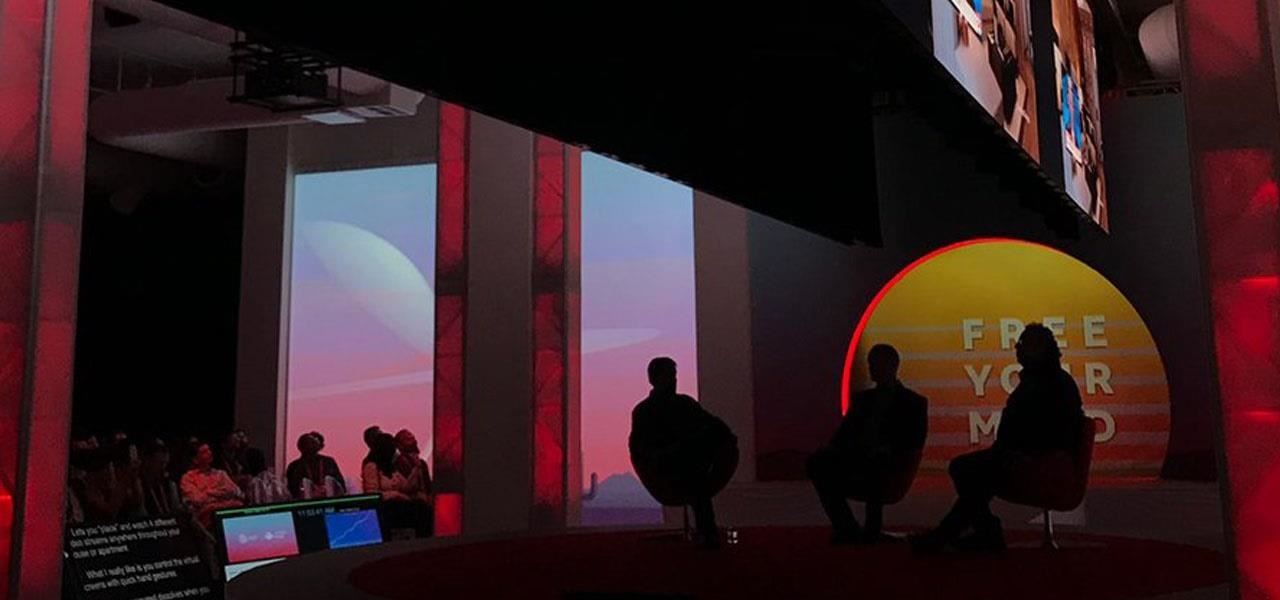
Obviously, Magic Leap understands the importance of the AR cloud and the software that will utilize it (hence all the 'Magicverse' talk), but it's also aware of how high a mountain that is to climb. So, for now, leading with hardware and supporting great software may be the next best strategy. The company's recent hackathon event in partnership with AT&T yielded results that were interesting, but generally uninspiring. But that was just one event, in one city. The real test will come throughout the next few weeks, as Magic Leap waits to see who takes the company up on its offer of up to $500,000 funding as well as technical and marketing support for the best ideas presented to its Independent Creator Program.
The only mystery left is what Magic Leap has planned for its oft-mentioned consumer rollout with AT&T. Spending a recent day at North's retail store for smartglasses (a much lower level form of non-immersive AR) illustrated to me in clear terms just how difficult it will be for any new player (outside of the likes of Apple) to get people to embrace wearable AR tech. Reading the virtual tea leaves, it sounds like Magic Leap is planning a consumer launch, at the earliest, sometime toward the end of next year. If that's even close to accurate, then the device will likely be about as large and tethered to a hip-computer as the Magic Leap One.
Do I think the public is ready to wear even a greatly slimmed down version of the Magic Leap One? No. In fact, I think it will take some herculean lifting to get the public to adopt what is essentially a notification device from a similarly unproven startup in North's Focals. Even Snap, despite its nearly 200 million installed user base, has had difficulty in its efforts to get people to widely adopt its comparatively simple camera glasses. Selling the public on wearables is hard — which is why so many people keep bringing up Apple — the company that managed to come to the smartwatch market late and still became the wearable tech frontrunner — as the likely AR smartglasses winner.
And they're not wrong. People trust Apple (for now). But they don't just trust Apple's tech; they trust its brand and style pedigree. That's huge. It's why you rarely see people wearing Spectacles in public. Snap has yet to earn the style pedigree points with the public it needs (although the recent design update was major step toward that goal). Can Magic Leap compete in that space? In short, no. Because on a technical level, the kind of truly immersive AR that Magic Leap delivers is still not technically ready for a pair of normal looking glasses (which is why Apple will likely start with a notification device that's similar to North's Focals, but far more polished and offering more software interactions).
Even backed by the power of AT&T, the upcoming release of a DirectTV Now app for the Magic Leap One, and a massive war chest of funds, I don't think Magic Leap will penetrate the market as a mainstream consumer entertainment device anytime soon (read: 36-48 months).
Prestidigitation: Magic Leap's Sleight of Hand & Eye
In the near future, Magic Leap's best bet is to roll out far more enterprise apps (manufacturing, healthcare, aerospace and defense, automotive, worker training, and remote business collaboration) than it is today. So far, it's the only space where AR has truly caught on, with hundreds of millions of dollars still flowing into the sector and some forecasts pegging the market value of the AR space at over $60 billion by 2023.
A clearer signal of this AR enterprise trend emerged during this year's annual Augmented World Expo, where there were very few games on hand, but a wealth of enterprise-ready devices and software, and hardly any mention of Magic Leap among attendees. And it's worth noting that even Tim Cook focused on business use cases over gaming when showing off Apple's ARKit-powered version of AR recently on prime-time TV.
But when I've asked Magic Leap insiders about the company's enterprise plans, amid trippy light shows from Tónandi and flying turtles in Create, the only direct comments are vague hints at more enterprise-focused apps in 2019 and beyond.

Nevertheless, some early signs that the enterprise space may work out for Magic Leap are OnShape and BrainLab. I recently had a chance to use OnShape to collaborate with three other Magic Leap One users as we all manipulated a 3D model of a machine component, annotating it with virtual stickies, resizing it from handheld to room size, and passing off control of it to one another. It's a powerful app that I can see being used immediately to great effect within engineering and design shops around the world.
Similarly, we've seen BrainLab's Magic Leap app shown off as an assistive tool for medical professionals, a tool that will likely be embraced by some doctors already experimenting with the HoloLens. And then, just last week, Twilio's remote collaboration app Avatar Chat went live on the Magic Leap One.
Still, none of the current enterprise-friendly Magic Leap One apps were as stunning and polished at Dr. Grordbort's Invaders or the Create app. That's the gap that Magic Leap will have to work hard to help developers to cross — making enterprise immersive computing as life-changing as gaming in this new environment. It's possible, but we're just not there, yet.
In the meantime, what Magic Leap is doing something every magician knows well: misdirection. Misdirection is the heart and soul of magic, and if we look at the story of Magic Leap from 100 feet above, it soon becomes obvious that all the robots, orcs, and astronauts are actually just gateway drugs to bend the minds of the public (and, most importantly, enterprise CEOs) into accepting this new computing paradigm.
Don't expect Magic Leap to tell you this directly; a magician never reveals his secrets. But if you think Magic Leap's investors plowed over $2 billion into Rony Abovitz's startup so he can make a bunch of games, then you're not paying close enough attention.


Dr. Grordbort's Invaders is truly great, but you need a lot of space (believe me, I tested it on a number of interior environments supposedly fitting the stated size parameters), and just the right conditions to play, including a lengthy scanning set-up. Similarly, Angry Birds on Magic Leap is amazing, but not so amazing that you'd always opt for the process of scanning your room and setting the game up rather than just starting the game up on your smartphone.
Gaming is profitable, but the true purpose of Magic Leap isn't about gaming.
As the saying goes, the greatest trick the devil ever pulled was convincing the world that he didn't exist.
"Imagine a [Star Wars style virtual robot] C-3PO that has real C-3PO intelligence. He speaks 10,000 languages in Bocce and Mandarin and he's there with you throughout the day and explaining the world to you," said Abovitz back in 2016. "That seems like a much friendlier way of introducing things like AI to your life because he's a good character you know he's not going to do bad things he's not going to take your personal information he's your friend."
Such a scenario does sound compelling, particularly once you get a chance to interact with MICA, another virtual assistant, as I did. But after spending a good deal of time wearing the Magic Leap One, the thought of an entire day in my home wearing the device (or even a slightly smaller version of it) to interact with MICA seems like it would be a bit claustrophobic. (Not to mention the fact that my Magic Leap One gets a bit too warm to wear comfortably after about an hour's use.)

However, the idea of having my own virtual C-3PO or MICA on a factory floor, in a training environment, in a high data flow business environment, or within a design or engineering firm, used in short, one to two-hour sessions, seems immediately more viable and practical.
We got the first hints at Magic Leap's true, profit-oriented interests when the news broke that the company was competing with Microsoft's HoloLens for a major military contract (already a $1.4 billion market, according to some reports). No whimsical games or ayahuasca-style light shows there, only high level, deadly serious defense business. It's where the real money is at for a device like the Magic Leap One.
Seen through a lens free of any pixie dust, it's clear that Magic Leap's most important mission is to keep the eye candy coming, while gradually winning over enterprise customers who start by accessing the wonderment of their inner child during Magic Leap demos and end by signing Magic Leap device contracts for some of the most mundane but important enterprise-level work that will be enhanced by AR.
Selling an enterprise AR solution using astronauts, furries, and psychedelic rock music? It's exactly the kind of unorthodox approach to challenging the establishment players that would make the late Steve Jobs smile down past his tattered and worn hippie jeans and wiggle his bare feet in amusement...as he calculated the profit potential of such a masterful ruse.
It's a nice trick if Magic Leap can pull it off.
Just updated your iPhone? You'll find new emoji, enhanced security, podcast transcripts, Apple Cash virtual numbers, and other useful features. There are even new additions hidden within Safari. Find out what's new and changed on your iPhone with the iOS 17.4 update.
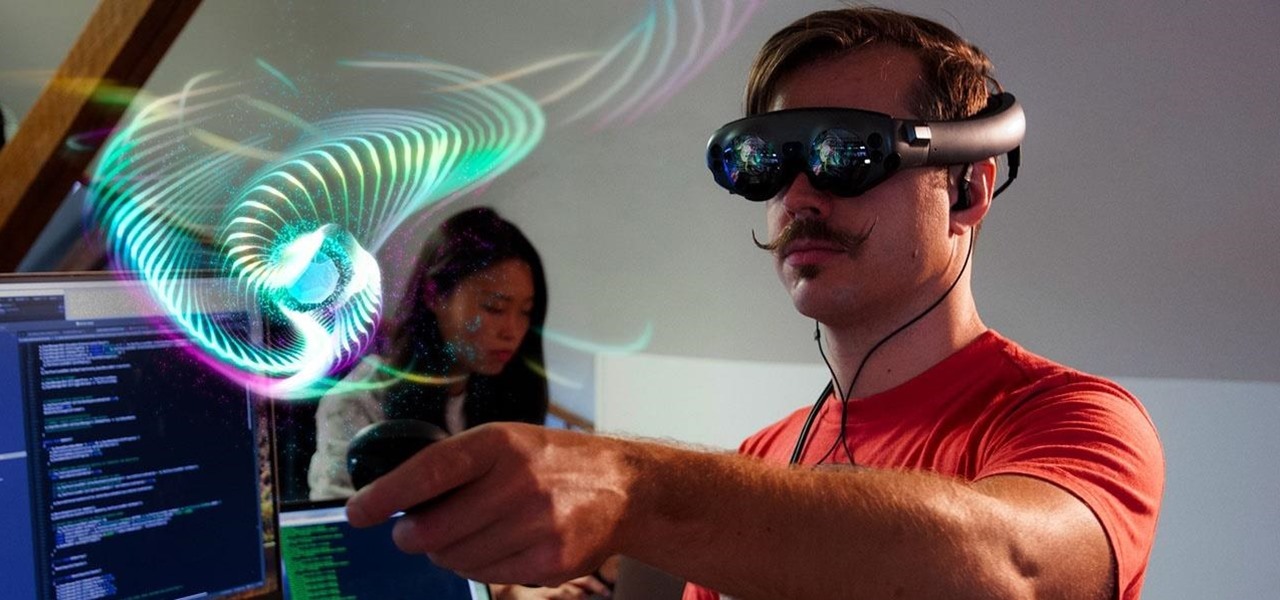





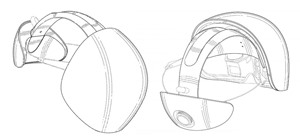
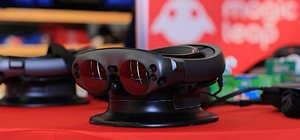


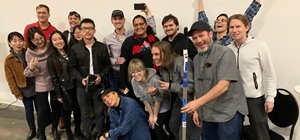
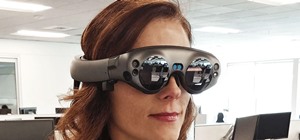
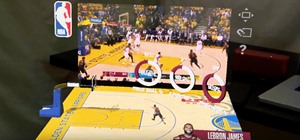





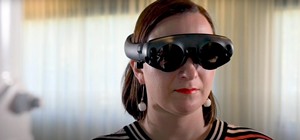


Be the First to Comment
Share Your Thoughts